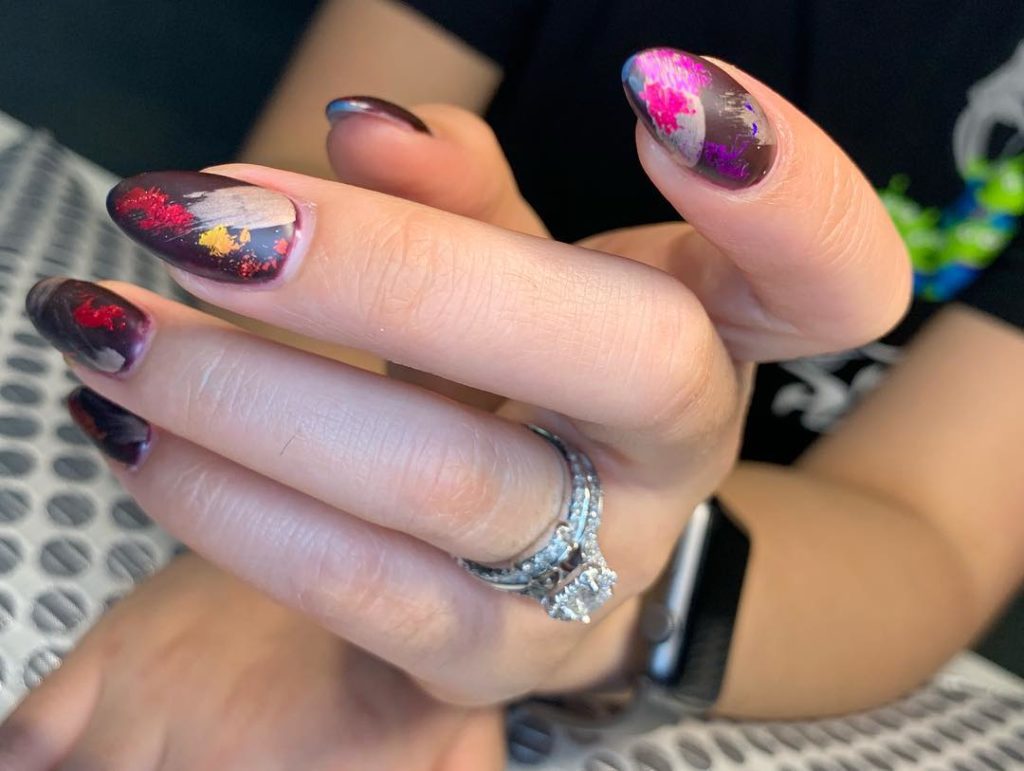This post originally appeared on The Verge.
It’s hard to remember the last time you touched your cuticles. Despite the onslaught of beauty blogs, social media stars, and superficial celebrity trends, the half-inch (and sometimes inch-long) line on our feet actually has more to do with our health than what we see onscreen. So, who doesn’t want to have shiny, beautiful nails? But the strategy that worked for the Kardashian sisters probably isn’t the one for you. Here are some tips that’ll make your manicure last all day, all year.
No-Manicure Day
Let’s face it, your cuticles have seen better days. Many chemicals used in manicure preparations (e.g. acetone and formaldehyde) get mixed with your cuticles to create a silky, layer-like effect. These chemicals can harm your skin, and if they get left on your nails you risk breaking them. The solution? A day without manicure so they don’t get too dry and brittle.
Tip: Check with your doctor to see if a “no-mint” day would be OK for you.
Oil
Nails are made from a mixture of oil and water, and the key to making them gorgeous is to blend in the oil. Don’t think of oil as just for your hair or face, oil works just as well for your nails too. It’ll keep your nails soft and shiny. You just need to change up the oils. Some tips:
Spend the least amount of time on your cuticles. If you really do need quick-dry, use olive oil or almond oil (topicals) and get a professional manicure if you need more options.
Avoid carafes and bottles. All that extra product is going to get in your cuticles, so make sure your bottles are vacuum sealed and you know exactly what’s in them before you use them.
Make sure to remove acetone (the main “hand wash” ingredient) after application. Don’t get mixed up with non-potable ones, which will just pour out in a plastic container.
Monofilament
Monofilament is the glue that holds your polishes and nail accessories together and keeps them in place on the nail. The major difference from regular nail glue is that it’s much more sticky. Even damp nails can stick to monofilament after it’s been left in a wax or cosmetic test tube for five minutes. So make sure to wear gloves for that job.
Tip: Some of your trusted favorites, like Elizabeth Arden Eight Hour Cream and OPI’s Coral Reef, are good monofilament alternatives.
Cracked Cuticles
If you’re too dependent on your favorite nail color or you’ve brushed your nails too often, you may experience cracked cuticles, which can end up to look like they’re just getting brittle and unattractive. Bacteria in your cuticles are one culprit, but so are your over-use of too-strong and painful polishes. If you brush your nails too much — make sure you’re applying oil twice a day and you’re wearing gloves when you actually do polish — you can start to see the signs of cracked cuticles.
Tip: Avoid flat heels when you’re more prone to breaking your cuticles.
Barber Nails
If you own a set of nail arting tools — or you just like seeing your nails get a little fancy — you’re most likely investing in salon-quality nail polish. Because these stores often test their polish on their customers, there’s always a chance of getting a funky flavor in the formulation. This can keep your nails looking nice for only so long — so try picking a base color that’s best for your hands and cuticles.
Tip: Nail polish can be really hard on a cuticle, so put the polish back in the packaging when you leave the salon. Otherwise, you’ll have all sorts of stickers stuck to your cuticles when you come back for the next polish application.
Restarts It’s Perfect
Whatever techniques you do to keep your cuticles soft and shiny, it pays to keep them in the limelight as much as possible. If you keep taking a key portion of your nails off for shampooing, your cuticles can’t get to that moisture barrier — and a dehydrated cuticle can lead to cracked skin and dryness. Instead, soak your cuticles in water or a gel before and after washing to soak up excess moisture and help them get a little more room to breathe.


0 Comments on "15 Ideas For Nail Trends That Don’t Hurt Your Cuticles"